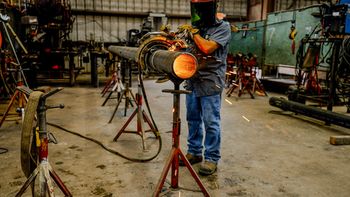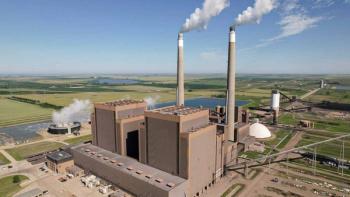
Steep fall in US wind capacity addition
It has been a rough period for the American wind industry. After several record setting years, uncertainties surrounding renewable subsidies led to a massive drop in wind capacity additions. A peak of 13,131 MW of added capacity in 2012 fell to only 1,087 in 2013. A domino effect saw U.S.-based manufacturing plants shutting down or cutting back.
(The DOE’s Wind Vision report pushes for 35 percent of the U.S. grid to be composed of wind by 2050)
Against that background, the American Wind Energy Association (AWEA) held its annual Windpower 2014 conference in Las Vegas in May. Attendance mirrored the crash in capacity. From over 25,000 a couple of years ago, only 8,000 attendees showed up this year.
Taking wind energy to the next level
Keynote addresses centered upon reinstating the Federal Production Tax Credit, climate change and carbon emissions. “Wind energy is the fastest, cheapest way to get the biggest carbon reduction,” said Susan Reilly, CEO of RES Americas, and new chair of the AWEA Board of Directors. “That makes wind an imperative, not an alternative.”
The U.S. Department of Energy’s (DOE) David Danielson, in charge of the Office of Energy Efficiency and Renewable Energy, talked about revolutionizing the energy landscape and taking wind to the next level. He showcased the DOE’s Wind Vision report which pushes for 35 percent of the U.S. grid to be composed of wind by 2050. That report is expected to be finalized this fall and could have major repercussions on the coal and natural gas industries.
Speakers from Siemens Energy Wind Power Americas, EDP Renewables North America and GE Renewable Energy echoed these sentiments. They noted the industry’s 43 percent reduction in wind costs over the past four years and called for further shaving of costs.
Gabriel Alonso of EDP Renewables felt that too much emphasis had gone on cost reduction via turbine technology. While that must continue, he said that the cost of investment capital and wind farm O&M were other fruitful areas.
Innovative turbine technology, meanwhile, was heavily in evidence in the large exhibition hall. GE, for example, promoted blade extensions to its popular 1.5 MW turbines. These blade inserts extend the 77-meter rotor to 91 meters. When accompanied by advances in controls and tooling, they are said to deliver a 20 percent power boost.
Novel vertical axis approach
Another novel concept was the Super Wind Turbine by State of the Art Wind Technologies (SAWT). Instead of mounting blades on a rotor up a tower, this company uses a vertical axis approach to provide a stronger blade structure, lower noise and operating costs, and boost energy production at low wind speeds. “We can begin generating energy at wind speeds as low as 2m/s,” said Bob Anderson, Vice President, Business Development at SAWT.
The company favors a system of blades driving a trolley. The blades provide driving force in any position on the track. It remains to be seen how well this concept will prove to be in larger installations.
Newsletter
Power your knowledge with the latest in turbine technology, engineering advances, and energy solutions—subscribe to Turbomachinery International today.




